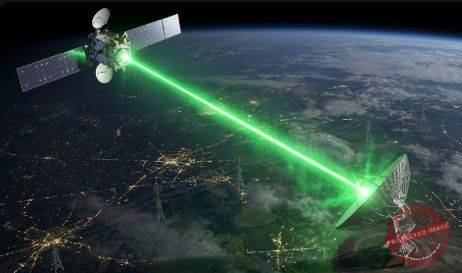While billion-dollar visions of space solar capture headlines, much of the practical action in microwave WPT is happening closer to the ground. In 2026, engineers are using microwave beams to quietly power the proliferating fabric of low-power devices that make factories, logistics hubs, and cities “smart.” From battery-less sensors on rotating machinery to embedded tags tracking pallets across warehouses, microwave WPT is emerging as an enabling technology for the next generation of pervasive computing.
The Battery Problem In A Hyperconnected World
The number of IoT devices deployed globally is projected to reach tens of billions, but powering them remains a stubborn problem. Batteries require replacement or maintenance, which is costly and sometimes impossible in hazardous or inaccessible locations. Energy harvesting from vibration, light, or temperature gradients helps in some scenarios, but is unreliable in dark, sheltered, or low-motion environments.
Microwave wireless power transfer offers a complementary option by deliberately sending RF energy to devices that need it. Low-power rectennas designed for milliwatt-scale operation can harvest energy from dedicated beacons or from ambient RF fields in industrial environments. Recent reviews highlight how innovations in rectifier circuits, nonlinear device modeling, and antenna array optimization have significantly improved the efficiency of low-power rectennas, making energy harvesting feasible at power densities compatible with safety standards.MDPI+1
From Labs To Living Warehouses
Pilot projects now demonstrate microwave power beaming inside warehouses and manufacturing plants. In a typical configuration, one or more ceiling-mounted transmitting arrays operate in an ISM band and direct low-intensity beams toward zones filled with tags and sensors. Devices equipped with compact rectennas and small storage capacitors can wake up, transmit data, and perform basic computations whenever the beam is present, effectively removing the battery from the design.
Academic and industrial prototypes show that at distances of a few meters, carefully designed rectennas can achieve RF-to-DC efficiencies above 50 percent at input powers of only a few milliwatts, enabling sensor nodes that consume tens of microwatts to operate reliably.semanticscholar.org+1 Multi-rectenna architectures, where several tiny rectennas feed a shared DC bus, further increase robustness to misalignment and multipath fading in cluttered spaces.ScienceDirect
In logistics hubs, companies are experimenting with microwave-powered RFID-like tags that can report location, temperature, or shock events without ever being plugged in. Such systems promise to reduce the lifecycle cost of asset tracking while improving sustainability by eliminating billions of coin-cell batteries.
Smart Cities And Infrastructure Monitoring
Beyond the factory floor, microwave WPT is being evaluated for smart-city deployments. Bridge-health monitoring systems, for example, require sensors embedded in concrete or attached to hard-to-reach structural members. Running cables is expensive; replacing batteries is dangerous. Microwave power beacons mounted on existing lighting or telecommunications infrastructure can periodically energize these sensors, enabling long-term structural health monitoring without physical intervention.
Similarly, environmental sensor grids measuring air quality, noise, or traffic flow can benefit from a hybrid approach: solar energy when available, microwave power when not. Because microwave beams can be precisely shaped and time-multiplexed, a single infrastructure installation can serve rotating groups of sensors without exceeding RF exposure limits in public spaces.OSTI+1
Safety, Standards And Interference Management
For indoor and urban deployments, safety and spectrum coexistence are paramount. Regulators such as the FCC and standardization bodies like IEEE have long maintained guidelines for RF exposure, which now form the basis for microwave WPT system designs. Power densities in occupied areas must remain below thresholds established to protect human health, and systems must avoid harmful interference with existing Wi-Fi, cellular, and radar services.Federal Communications Commission+1
Recent studies on the safety of wireless power transfer suggest that, at the low power levels used for IoT applications, compliance is straightforward if beam steering, duty-cycle control, and spatial nulling are properly implemented.OSTI+1 In practice, WPT transmitters are likely to be tightly integrated with spectrum-management software, dynamically adapting frequencies and beam patterns based on real-time sensing of other users.
Closing Thoughts And Looking Forward
Microwave WPT for IoT and smart-city infrastructure may never make front-page news, but its impact could be profound. By removing batteries from millions of small devices, it can reduce maintenance costs, extend the reach of sensing into previously inaccessible locations, and cut down on electronic waste. As rectenna technology matures and integrated RF-power chips become standard, designers will increasingly treat power-over-air as another tool in the connectivity toolbox.
Over the next decade, expect to see microwave power nodes quietly appear in factories, warehouses, offices, and street furniture, often branded as part of a broader “wireless energy network.” Combined with edge AI and cloud analytics, these invisible power beams will help create digital twins of physical infrastructure that remain updated in real time. Microwave WPT may not replace wires or batteries everywhere, but for the right class of low-power devices, it offers an elegant, maintain-once-and-forget solution.
References
Low-Power Rectennas In Microwave Wireless Power Transfer: A Review – MDPI Sensors and Actuators – https://www.mdpi.com/3042-5697/1/1/5 MDPI
The Rectenna Device: From Theory To Practice – MRS Energy & Sustainability (Cambridge University Press) – https://www.cambridge.org/core/journals/mrs-energy-and-sustainability/article/rectenna-device-from-theory-to-practice-a-review/41348DB2BDD3706FA5B5A3161C3DF586 Cambridge University Press & Assessment
Wireless Power Transfer Using Microwaves At 2.45 GHz ISM Band – Semantic Scholar (conference paper) – https://www.semanticscholar.org/paper/Wireless-power-transfer-using-microwaves-at-2.45-Abbasi-Adnan/11f2333675c8e89e905458de36d8697cac7d4f04 semanticscholar.org
Review Of Safety And Exposure Limits Of Electromagnetic Fields From Wireless Power Transfer – OSTI – https://www.osti.gov/servlets/purl/1649127 OSTI
RF Safety FAQ – Federal Communications Commission – https://www.fcc.gov/engineering-technology/electromagnetic-compatibility-division/radio-frequency-safety/faq/rf-safety Federal Communications Commission
Author and Co-Editor: Benoit Lafrance – Wireless Power Transfer Technologies, Montreal, Quebec; Peter Jonathan Wilcheck, Co-Editor, Miami, Florida.
#SmartCity #MicrowaveIoT #BatterylessSensors #WirelessPower #Rectennas #Industry40 #LogisticsTech #RFHarvesting #InfrastructureMonitoring #EnergyOverAir
Post Disclaimer
The information provided in our posts or blogs are for educational and informative purposes only. We do not guarantee the accuracy, completeness or suitability of the information. We do not provide financial or investment advice. Readers should always seek professional advice before making any financial or investment decisions based on the information provided in our content. We will not be held responsible for any losses, damages or consequences that may arise from relying on the information provided in our content.




